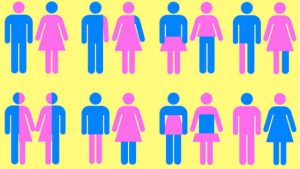Home » Commentary » Opinion » Dragging gender into the public square
· Ideas@TheCentre
 Libertarians and libertines used to argue that the government ‘should get out of people’s bedrooms’ because sex was a private matter of choice and consent between adults.
Libertarians and libertines used to argue that the government ‘should get out of people’s bedrooms’ because sex was a private matter of choice and consent between adults.
But in the age of identity politics, sexuality is being dragged into the public square to shape interactions between citizens and the state and its agents.
Witness the Victorian Council of Social Services submission to a recent Productivity Commission enquiry, which insists that the National Disability Insurance Scheme must provide:
culturally safe and gender responsive information, effective planning and quality service delivery, including practices which are sensitive to the needs of people who identify as lesbian, gay, bisexual, transgender, intersex, queer and/or gender neutral (LGBTIQA+).
One wonders how gender-specific services will materially promote the key objectives of the NDIS, which is to improve the quality of services provided to all Australians with severe disabilities to meet their human needs.
It is also hard to tell what ‘gender-sensitive’ services means in practice. A clue is given by this story.
The ‘Rainbow Tick’ accreditation program apparently helps service providers to understand that “People were bashed and people were put into jail for loving the person they loved… so understanding the fear people may have in that community is absolutely immense.”
The cynic in me wants to question the utility of a ‘diversity training industry’ that from one angle appears to be an exercise in gender warrior-style political conscience-raising.
But on the other hand, people with ‘lived experience’ of persecution might well be reassured by accessing services that understand the “historical experiences GLBTIQ individuals.”
Yet I am also conscious of how the liberal tradition of tolerance — which I have studied at length in terms of the way Australia has successfully integrated migrants into the nation — is based on the principle of overlooking differences and finding commonalities instead.
Hence I worry that ‘institutionalising’ sexual identity in the name of ‘inclusiveness’ could potentially prove counter-productive and divisive.
The danger is that by focusing on sexuality — and by essentially reducing people to their sexual identity as we interact in the public square — we risk denying the common humanity of us all that is the true foundation of tolerance.
Dragging gender into the public square